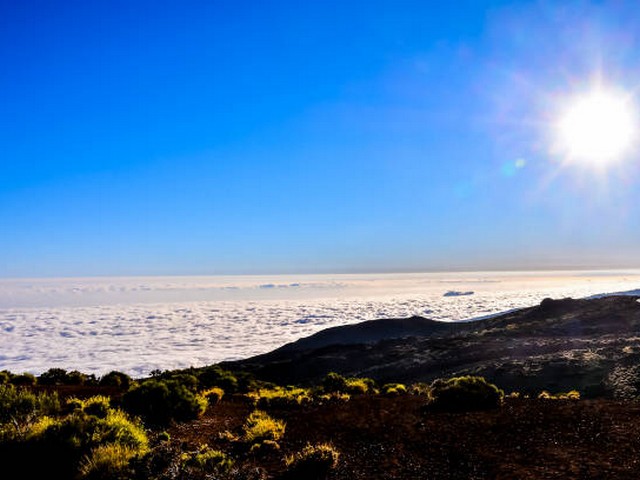Family Kilimanjaro Climb Itinerary Planning: An Unforgettable Journey Awaits!
Welcome to the adventure of a lifetime! Are you considering trekking Mount Kilimanjaro with your family? Here at the Kilimanjaro Centre for Trekking and Ecotourism (KCTE), we understand that planning such an expedition can be as daunting as it is exciting. But fear not! We specialize in crafting memorable, safe, and enjoyable climbing experiences that cater specifically to families. In this detailed guide, we’ll walk you through everything you need to know about planning your family’s Kilimanjaro climb, ensuring that every member, from the tiniest to the toughest, has an amazing experience.
Why Choose Kilimanjaro for Your Family Adventure?
Mount Kilimanjaro isn’t just Africa’s highest peak; it’s a symbol of challenge, endurance, and achievement. Climbing Kilimanjaro offers a unique opportunity to bond with your family, instilling values of perseverance and teamwork. It’s a chance to disconnect from the digital world and connect with nature and each other. The beauty of the mountain’s changing ecosystems — from lush rainforests to stark alpine deserts — is unmatched. Imagine the stories you’ll tell and the memories you’ll make!
Choosing the Right Route for Your Family
Marangu Route: Comfort and Accessibility
Often dubbed the "Coca-Cola" route, the Marangu route is popular among families for its relative ease and comfort. This route offers hut accommodations, which can be less daunting for kids or less avid campers. It typically takes 5-6 days, making it one of the quicker routes to the summit.
Machame Route: Scenic and Engaging
If your family is up for a bit more of a challenge and enjoys camping, the Machame route might be the perfect choice. This route is more scenic but also more demanding. It takes about 6-7 days, allowing for better acclimatization and higher success rates.
Lemosho Route: Remote and Pristine
For families looking for a more secluded experience, the Lemosho route offers a longer trek (7-8 days) through some of the most untouched parts of the mountain. This route provides ample time for acclimatization and offers stunning views and diverse wildlife.
Preparing Your Family for the Climb
Physical Preparation
Start with regular family walks or hikes to build endurance. Gradually increase the distance and elevation gain as your trip approaches. Consider professional training or joining a climbing club for structured preparation.
Mental Preparation
Discuss the journey ahead with your family. Highlight both the challenges and the rewards. Encourage a mindset of resilience and mutual support. Watching documentaries or reading books about Kilimanjaro can also boost motivation and excitement.
Health and Safety
Consult with a travel doctor to ensure all family members are medically cleared for the climb. Discuss altitude sickness and its symptoms. At KCTE, we provide detailed health and safety briefings and ensure that our guides are Wilderness First Responder certified.
Packing Essentials: Gear and Supplies
- Clothing: Layering is key. Include moisture-wicking base layers, insulating mid-layers, and waterproof outer layers.
- Footwear: Invest in good-quality, well-fitting hiking boots and break them in well before the trip.
- Protection: Sunscreen, hats, and sunglasses are a must. Don’t forget a first-aid kit tailored to your family’s needs.
- Gear: Sleeping bags, walking poles, and headlamps. We provide high-quality group equipment, so you only need to bring personal gear.
On the Mountain: What to Expect Day by Day
A typical family itinerary on the Marangu route might look like this:
- Day 1: Trek to Mandara Hut through dense rainforest.
- Day 2: Hike to Horombo Hut, entering the moorland zone with vast views and possibly glimpses of wildlife.
- Day 3: Acclimatization day at Horombo Hut, with short walks to further elevate your altitude experience.
- Day 4: Ascend to Kibo Hut, preparing for your summit push.
- Day 5: Summit day! The trek begins at midnight, aiming for Uhuru Peak. Descend to Horombo Hut for the night.
- Day 6: Completion of descent to the park gate and return to base.
After the Climb: Continuing the Adventure
After descending Kilimanjaro, why not explore more of Tanzania? Consider a safari in the Serengeti or a relaxing few days on the beautiful beaches of Zanzibar. At KCTE, we offer packages that can include these experiences, providing a well-rounded adventure for your family.
FAQs
What is the best time of year for a family climb of Kilimanjaro?
The best times are during the dry seasons: January to March and June to October.
Are children allowed to climb Kilimanjaro?
Yes, children from the age of 10 are generally allowed to climb, but they must be adequately prepared and capable of handling the trek.
How can we manage altitude sickness?
Proper acclimatization is key. Choose a longer route if possible, and ensure everyone stays hydrated and follows the guide’s advice on pacing.
Ready to Plan Your Family Adventure?
Embarking on a "Family Kilimanjaro Climb" is truly a journey of a lifetime. With careful planning, preparation, and the right guidance from the experts at Kilimanjaro Centre For Trekking and Ecotourism (KCTE), your family can have a safe, enjoyable, and memorable experience. Ready to reach new heights together? Contact us today to start planning your family’s expedition to the roof of Africa!
Remember, climbing Kilimanjaro is not just about reaching the peak; it’s about the memories you create with every step alongside your loved ones. Let’s make those dreams a reality with KCTE where adventure meets family bonding at 19,341 feet!




